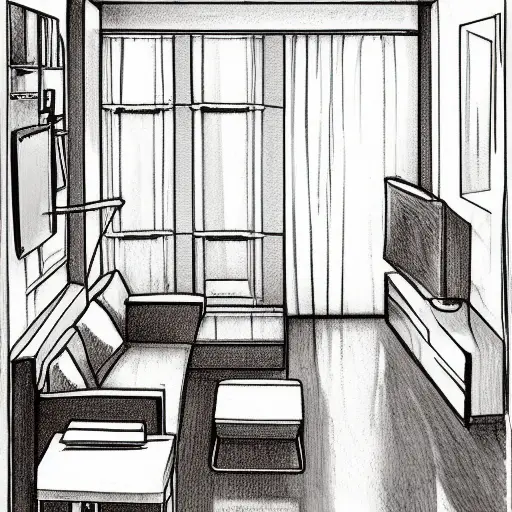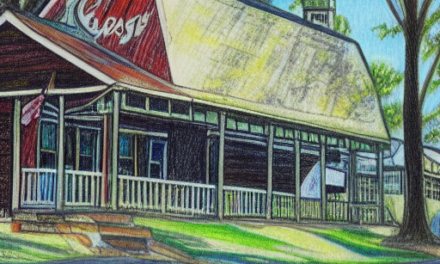If you have a small living space, there are several tips that you can use to make it look bigger and more spacious. For example, you can use open shelving to create a larger kitchen or add a loft bed to increase floor space. Also, make sure you minimize clutter. Don’t let your small living room be too cluttered, and try to set up organizational systems to keep your stuff organized. Also, try to clean up your space regularly, because small spaces tend to feel cramped if you don’t.
Decorating a small living space
Decorating a small living space can be challenging – it often has limited floor space, so it’s important to get creative when decorating. Consider mounting storage units near the ceiling or using floating shelves. These will help you maximize space and also serve as focal points. You can also get a multifunctional piece of furniture to use in multiple areas.
Try using natural light to open up the space. Natural light will make a small room appear larger and airier. You can also add natural elements, like house plants, to make the space feel calming. You can also group several plants in varying heights to create the illusion of abundant greenery in the space. Choose natural-toned paint colors to create a consistent theme throughout the room.
Another way to maximise space is to use symmetry. This is calming, and helps show that the space has been well planned and that the objects in the room have a purpose. Symmetry in a small living space can be achieved by creating a focal point such as a plant, coffee table, or piece of art.
While some people believe that bigger is better, it’s important to remember that a small living space can be as elegant and beautiful as a home with 8,000 square feet. By editing your possessions, using color to your advantage, and smart storage, even a tiny living space can look great.
Furniture choices
Furniture choices for small living rooms can make a huge impact on the feel of the room. By choosing pieces that are multifunctional, you can maximize the use of space and create a stunning focal point. For example, a storage ottoman is a great piece of furniture that can double as a footstool, coffee table, and storage box.
Small living rooms should be kept as light and airy as possible. Choose furniture that has a light-colored frame and legs that aren’t too heavy. Mid-century-style furniture works well in small living spaces because it doesn’t break up the space. Simple pieces with tall legs are also a great choice.
Large sectionals can be extremely comfortable but can quickly overwhelm a small room. Avoid choosing sectionals that are too heavy or too stuffed, because they will make the room look and feel smaller. Instead, choose a sectional that has fewer parts, which will be lighter visually. A large sofa will also overcrowd the room.
Lighting
If your living space is small, lighting can make a big difference. Layering lights is an excellent way to brighten your space and add task lighting. Use layering lights for specific activities in your living room, such as reading or watching TV. This method will make your space feel larger and more welcoming.
You can also use wall lights to add interest to an empty wall. They will light up artwork and sofas and also free up floor and table space. Try to choose a decorative, sculptural light or one that has a simple, minimalist look. You can even hang a single light in one wall to add a minimalist look.
Small living rooms have a limited wall space, so using lighting as art will make your living space look more interesting. Avoid the generic lamps and try grouping table lamps together or ceiling lights with different styles and colors. This will add texture and interest to your room, and it’s a great way to maximize your limited wall space.
Small rooms don’t have high ceilings, so you don’t need to install bulky ceiling lights. You can opt for flush-mounted or close-to-ceiling fixtures that can add adequate lighting. You can also opt for recessed lights, which are hidden in the ceiling and act as powerful spot lights aimed downward. Since they’re hidden, they won’t create any ambient reflected light but will provide a focus on important areas of the room.
Storage solutions
While living in a small space has some benefits, such as being easy to clean and a breeze to find things, there are also some disadvantages. One of these is lack of space for storage. A clever storage solution can make the most of a limited amount of space. Some creative storage solutions use existing furniture, such as ottomans and art, to store additional items.
Floating shelves and wall racks are two storage options that can maximize your space and make it more functional. Floating shelves can free up top space on dressers and nightstands, allowing you to create artistic displays on the open wall space. They can also be used to store kitchen tools and herbs.
Mirrors
Mirrors in small living rooms are an excellent way to make the space feel larger and longer. Not only will they make a room look longer, but they can also make the space appear wider. You can use a mirror as a focal point to draw attention to a particular area in the room, such as a fireplace.
Mirrors are available in a wide variety of designs, so you can find a mirror to fit your style and your space. These pieces are also a great way to create a gallery wall. Choose frames that complement each other, and try different materials for a unique touch. For instance, a mirror made from cane will lend a rustic feel to the room.
Mirrors with an arch design are another great choice. They have an elegant shape and are similar to windows without grilles. These pieces are typically inexpensive, but they can make a large impact on a room. They don’t have to be overly large, which is great for small living spaces. Alternatively, you can choose a more traditional look. Traditional arched mirrors have intricate carvings that give them a vintage feel.
Mirrors with asymmetric shapes can also be a stylish addition to a small living room. If you have a small living room with no windows, a large mirror will give the illusion of more space, and you can add artwork and family photos to them. If you are not able to afford an expensive mirror, you can also get smaller ones at thrift or discount stores. You can paint them the same color and group them together in a cluster to create an organized look.
Adding plants
Adding plants to your living space can add both visual and psychological benefits. They will also soften your space and improve air quality. Plants look particularly good on bookshelves and mantels, where they ground the space and add a sense of the outdoors. However, it is important to understand the environmental needs of houseplants before deciding on what type of plants to add to your living space.
Some plants are low-maintenance and require only minimal care, making them the perfect choice for a small space. They also add a splash of color and vibrancy to a space. Many plants also absorb sound, making them useful for areas that are subject to noise pollution. Hedge plants, in particular, can help reduce noise pollution.
When selecting plants, choose those that don’t require lots of light. If space is limited, consider adding vertical plants. Bamboo trees can easily fit into a small corner and can add a beautiful touch of green to a room. Or, you could go for ivy or garlands that cover walls and surfaces.
Adding plants to a small room requires creative thinking. Choosing the right place to cluster your plants is essential because it will determine the size of the cluster and how many plants you should place in a grouping. A bookshelf, mantle, entertainment center, and empty wall space are ideal spots for clustering plants.













